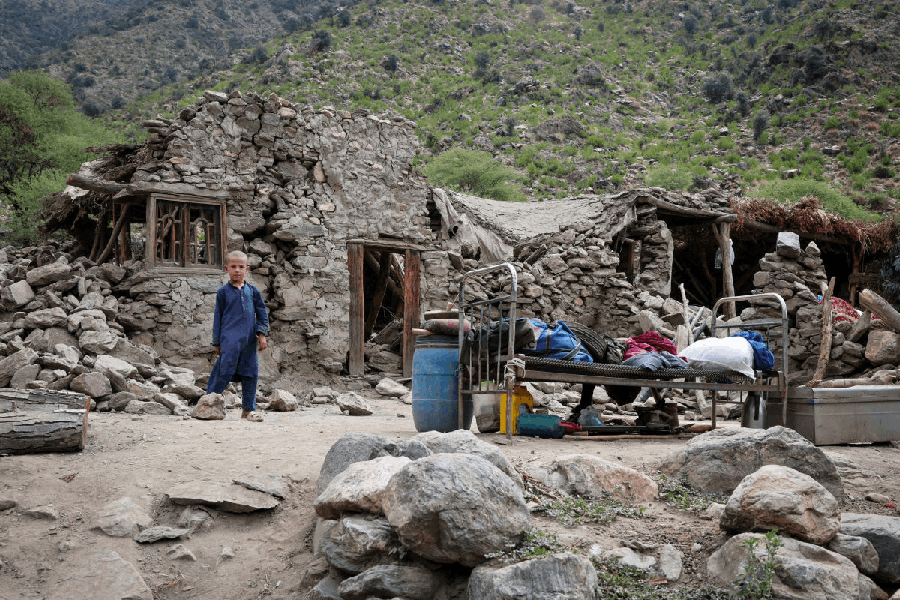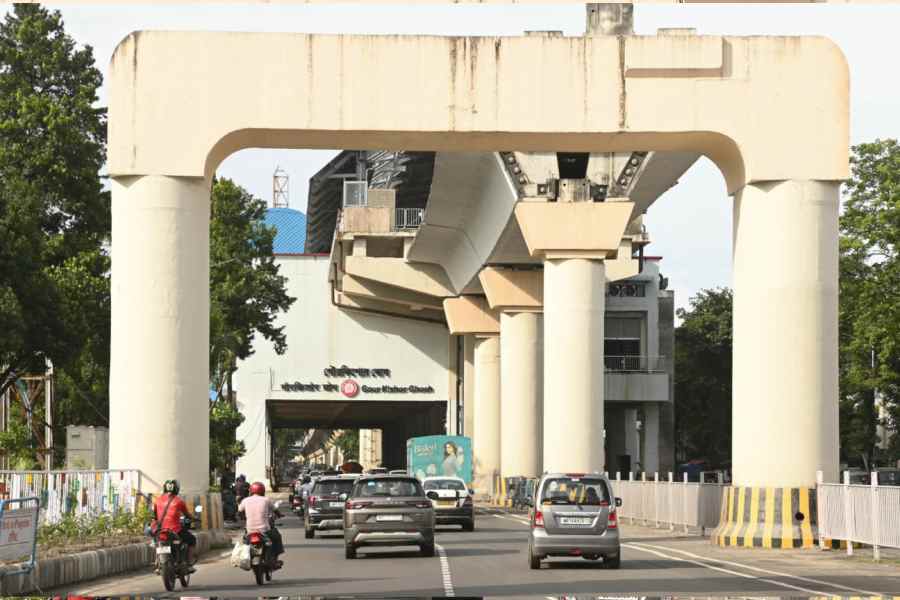 |
| Repair on at the main entrance to Jagannath temple in Puri. Picture by Sarat Patra |
Cuttack, April 24: The Archaeological Survey of India (ASI) today committed in Orissa High Court to complete repair of the lions’ gate, better known as singha dwara (main entrance), of the Jagannath temple in Puri by May 31.
The commitment was given by ASI (Bhubaneswar circle) superintendent Bhuban Vikrama and former superintendent A.K. Patel, who were present in court.
The court was hearing the temple administration’s allegations about the tardy progress in repair and restoration of the entrance.
Apprehensions were expressed about completion of the work before rath yatra due to the slow pace. The scaffoldings around the lions’ gate for repair and restoration would pose hindrance to the rath yatra process.
“Taking on record the ASI officials commitment given by the, the division bench of Justice Pradip Mohanty and Justice Biswajit Mohanty directed the Pratihari Nijog Anand Bhog Committee (a priests’ body) to evacuate within two weeks the building near the lions’ gate from where it is functioning,” Jagannath temple administration counsel Biswanath Rath said.
“The court gave the ASI free hand to proceed with demolition of the building if the committee failed to voluntarily evacuate it within the deadline,” Rath said.
The ASI stated that the building in which the committee was functioning needed demolition for repair of the lions’ gate. The structure shares the sidewall of lions’ gate as one of its corner walls. Room beams are inserted in the lions’ gate. As a result, cracks are noticed on the gate.
The Puri temple administration further alleged that despite clear directions of the high court on March 21 last year, the ASI had undertaken demolition 10ft from the lions’ gate instead of the lions’ statue.
“Taking note of it, the bench again ordered that there should be a clear passage of 10ft from the place where the committee officiates between the lions’ statue up to the main entrance,” Rath said.
The court’s order was intended to ensure that the megahanada pacheri (outer boundary wall) is visible to the pilgrims while entering the temple vis-à-vis addressing the obstruction the building created for repair of the main entrance to the temple.











